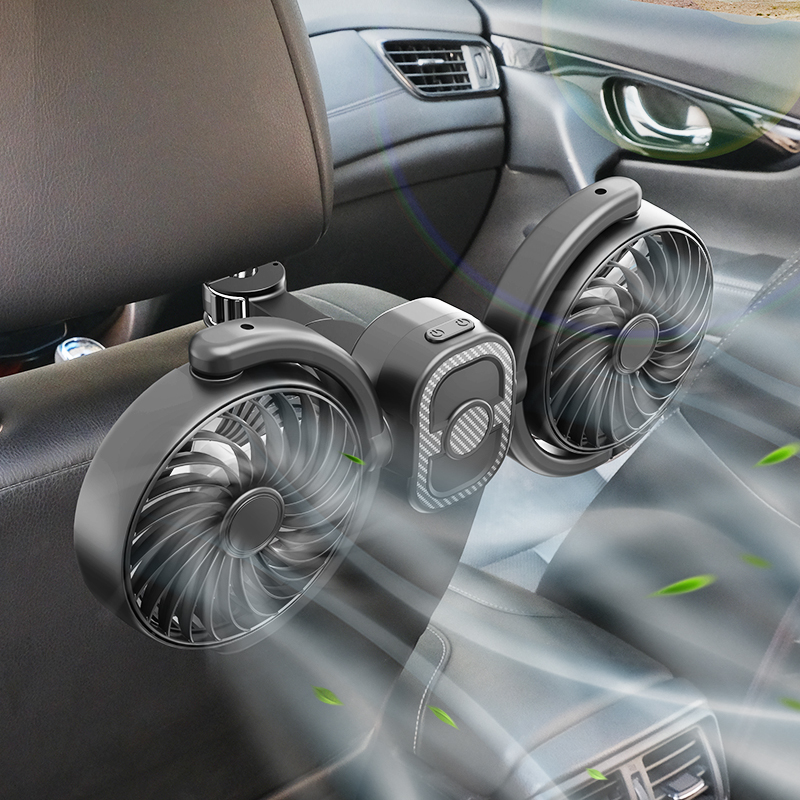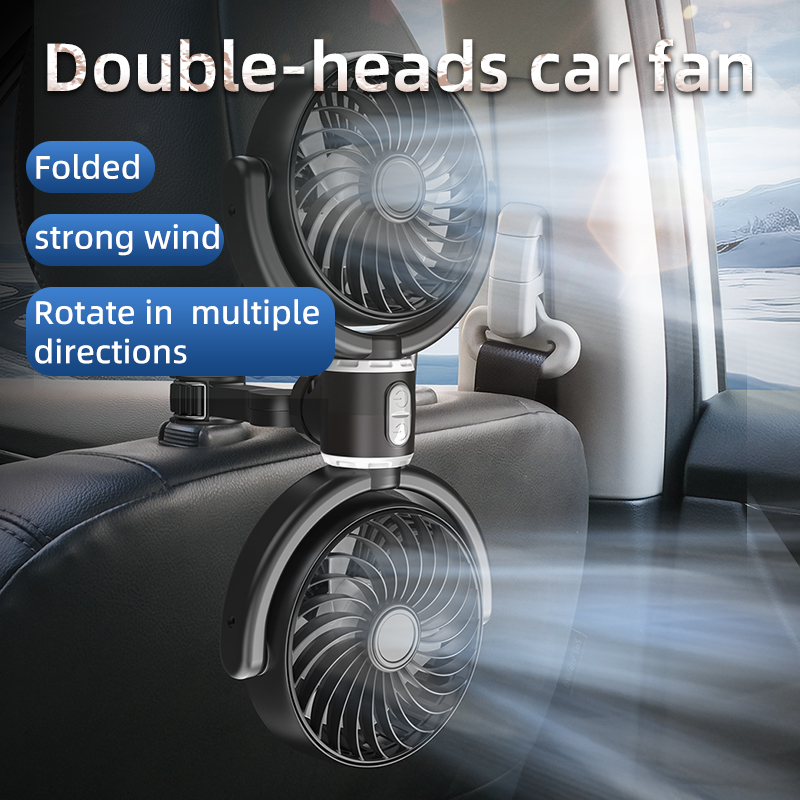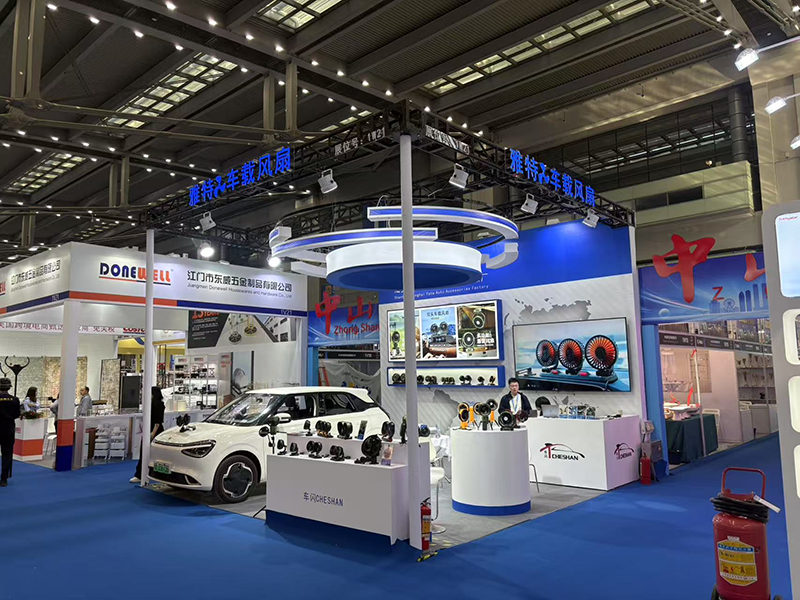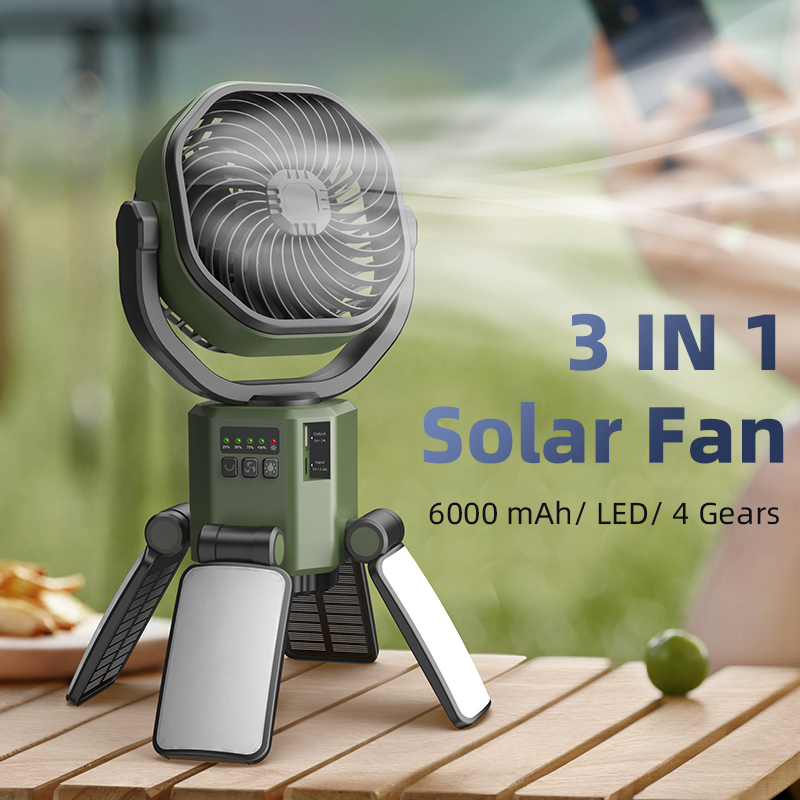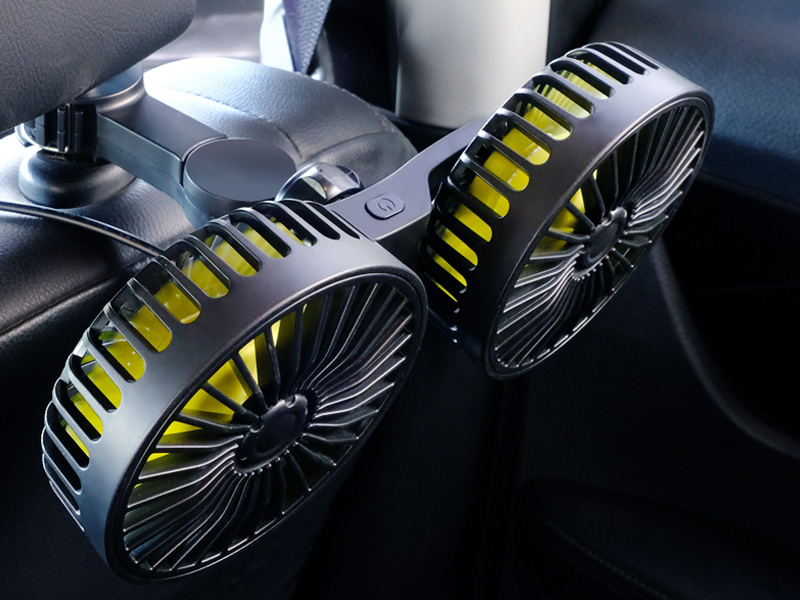Car Fans: From "Cooling Tools" to "Smart Companions"–The Road Ahead

I. Awakening Demand: The "Second Rise" of Car Fans.
Despite the prevalence of in-car air conditioning (over 90% adoption rate), car fans might seem outdated. Yet market data reveals a reversal: the global car fan market is projected to grow from 1.56 billion in 2023 to 2.83 billion by 2028, with a compound annual growth rate (CAGR) of 12.7% (Source: Market Research Future). This surge is driven by two key trends:
Energy Anxiety in New Energy Vehicles: Heating in winter and cooling in summer can consume 30%-50% of an electric vehicle’s range (Tesla Technical Whitepaper). As an auxiliary temperature-control device, car fans achieve localized cooling with just 5% energy consumption, becoming essential for preserving battery life.
Diversified Self-Driving Scenarios: Post-pandemic camping trends have expanded car fans from in-car cooling to outdoor ventilation. E-commerce data shows a 210% year-on-year sales increase in 2023 for car fans with camping plugs and USB power.

II. Technological Revolution: From "Mechanical Knobs" to a "Smart Ecosystem" Next-gen car fans are breaking traditional molds through intelligence and integration:
Seamless Interaction:
Embedded humidity-temperature sensors auto-adjust speed (e.g., Nissan-Dyson collaboration); voice control via vehicle systems (e.g., Xiaomi’s ecosystem fan supports XiaoAI voice assistant).
Health Upgrades:
Negative ion sterilization (Hyundai’s Luxury Care series) and PM2.5 filtration (Gree’s purification fans) cater to post-pandemic health demands.
Structural Innovation:
Tesla’s patented hidden fan integrates into headrests for "bladeless airflow"; domestic startup Carku launched magnetic-mounted fans compatible with windows, sunroofs, and tents.
III. Scenario Reimagined: From "Functional Product" to "Experience Economy".
Car fans are evolving into service-driven experience platforms:
Personalized Subscriptions:
BMW’s iDrive Store offers a Breeze Subscription Pack for paid features like scented airflow and dynamic lighting.
Data-Driven Optimization:
User habit analysis (e.g., preferred fan speed, usage time) refines vehicle thermal logic. Ford-IBM’s AI model predicts passenger comfort and adjusts preemptively.
Cross-Border Fusion:
MUJI’s "Silent Meditation Fan" pairs with car audio for white noise; Zeekr’s AR-HUD integration creates "visual cooling effects."
IV. Challenges and Future: Breaking the "Low-End Trap"
Despite promising prospects, the industry faces dual contradictions:
Tech Barriers and Cost Pressures: High-end chips rely on imports (STMicroelectronics, Texas Instruments), keeping Chinese manufacturers’ profit margins below 8% (China Association of Automobile Manufacturers).
Standardization Gaps: Varied power interfaces and installation spaces across models degrade universal product performance.
Solutions are emerging:
Modular Design: Bosch’s Fan Cube supports USB/Type-C/wireless charging, compatible with 90% of vehicles.
Material Breakthroughs: CAS-developed graphene flexible fans (3mm thick, 40% lower power consumption ) adhere to curved surfaces.
Automotive-Grade Certification: Huawei HiSilicon’s AEC-Q100 certified fan control chips target front-end markets.
Conclusion: Toward a "Human-Car-Environment Symbiosis"
Future car fans will transcend mere airflow devices, becoming sensory nodes in the "human-car-environment" interaction network:
Activating air circulation by monitoring CO₂ levels;
Adjusting airflow to avoid direct exposure to children/pets via motion tracking;
Syncing with urban weather data to preemptively block UV radiation.
As technology aligns with human needs, this once "niche" product is scripting a new chapter for smart automotive ecosystems.
Data Backing:
68% of Tesla owners are willing to pay a premium of over RMB 500 for smart thermal-control fans;
JD.com’s 2023 Car Electronics Trends notes mid-to-high-end fans (RMB 200-500) now account for 37% of sales, up from 19%;
The EU’s 2025 Vehicle Circulatory Ventilation Standard mandates air circulation enhancements in new cars, unlocking policy-driven growth.
In this silent evolution, those who anchor innovation in user experience and redefine the value of "airflow" will seize the next ticket to the smart mobility era.














